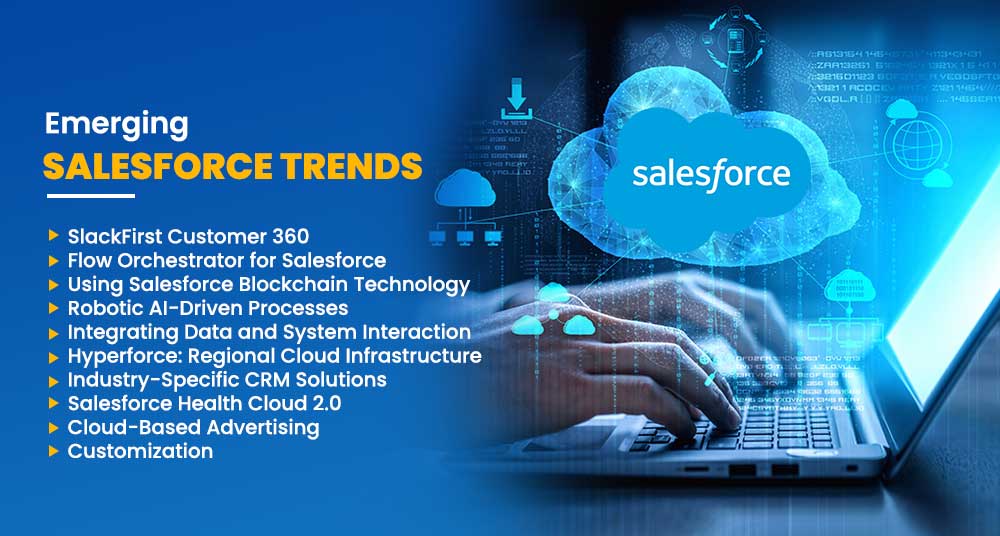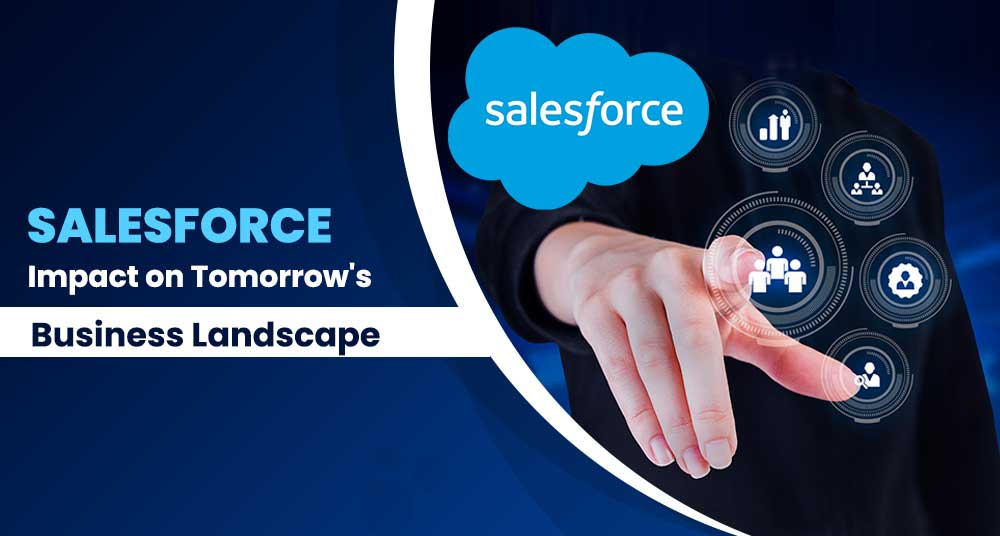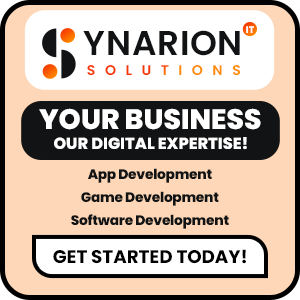With data collection skyrocketing in the last ten years, Salesforce has slowly become essential in helping companies manage and automate their customer information databases, with a secondary focus on boosting business operations.
One of the most critical ways Salesforce helps companies cope with rising amounts of customer data is through Customer Relationship Management systems. Often shortened to CRM Systems, these innovative software packages are developed to be versatile, robust, and flexible. They receive constant updates to stay up-to-date and have new tools added as more Salesforce trends crop up every year.
With the business sector just starting to recover from the global shutdown, adopting the newest practices and Salesforce app development is more important than ever.
The question is, how will you ensure your Salesforce tech stays relevant with the rising need for digital-first sales strategies?
Is Salesforce Still Relevant in 2025?
Yes! This is one of those places where you shouldn’t be harboring any doubts: Salesforce is the world’s best CRM software system, holding a little more than 20% of the entire CRM Systems market. According to Forbes, Salesforce was also 2018’s highest-growing CRM software package, with a revenue increase of over 23%.
And it’s not just more companies adopting the CRM system that makes Salesforce app development the best option for you. Salesforce is continuously improving its service quality and flexibility.
Two great examples are:
- SlackFirst Customer 360, a centralized platform for professionals to collaborate and communicate daily, and
- Salesforce Health Cloud 2.0, is aimed at helping healthcare personnel and medical institutions optimize their workflows.
The Best Reasons You Should be Using Salesforce Today
Salesforce offers various benefits to companies that choose this CRM software. Using Salesforce to enable accessible communication and comprehensive customer data management is a big step for any company. Those usually require a couple of good reasons first, right?
We’ve listed down some of the best reasons why you should be using Salesforce today, starting off with a benefit that might be obvious:
- CRM Software systems typically require a complicated setup process. Still, Salesforce takes the difficulty out of the equation with an easy install process and a minimal time investment required to use this software. All you need is a Wi-Fi connection to communicate with colleagues and employees and update your customer data in real-time, from anywhere in the world.
- Salesforce has a robust customization system for its users, enabling them to add extra modules, create innovative sales strategies, and set up visual representations of customer data as required.
- This CRM software brings your departments together in real time through a multitenant architecture. All your data will be on a single platform, which removes a lot of everyday hassle from making sales.
- You get access to several handy reporting tools when you get Salesforce solutions for your company. Tools like Lightning Experience and other platforms like G-Connector and Tableau provide a simple view of sales information and customer service and help you enhance customer engagement.
- The best thing about Salesforce app development is that it’s immensely mobile-friendly through the Salesforce Mobile App. This means you can manage your data from anywhere in the world since all you need is a smartphone and an Internet connection.
The key to making full use of your Salesforce solutions is to spend some time thinking about what’s coming next in technology, demographics, and economics and how it will affect future sales opportunities.
People have already identified how the sales world is changing. Still, the following are the trends we found revolutionizing in driving sales growth.
The Top 10 Salesforce Trends You Need to Know About

SlackFirst Customer 360
Portals have recently seen a massive surge in both usage and popularity, and there’s a good reason. These platforms enable organizations to operate almost entirely online without any decrease in the quality of service, which is why they’re so popular with government agencies.
To capitalize on that, Salesforce now provides SlackFirst, a portal technology that allows customers to interact and perform business activities using Salesforce and other apps that integrate with SlackFirst.
The importance of this development is hard to overstate: SlackFirst allows for cross-departmental collaborations to provide a consolidated user experience, significantly boosting operations in your sales divisions.
If all that sounds too complicated, here’s a quick sum-up of what this means; SlackFirst is excellent because it helps users automate most of their daily tasks. It also eliminates the risks of human error, as integrating Slack with Salesforce lets you do your tasks quickly and efficiently.
Flow Orchestrator for Salesforce
Automating daily tasks has become increasingly important as business sectors return to the field worldwide. At the same time, human management of customer data creates the risks of miscalculations, decreased customer satisfaction, slow performance, and other things that eventually lead to lost income.
Salesforce app development provides the Flow Orchestrator tool to combat this specific problem.
It allows admins to automate regular enterprise procedures and, instead of requiring specific hard-to-learn commands, will enable you to edit those processes and procedures with simple clicks.
Let’s say you’re hiring a new employee. Instead of devoting human resources to the entire signup, review, and orientation processes, Flow Orchestrator lets you define the whole process in simple steps, reducing both the time investment and the human resources that go into it.
The features introduced with this tool have a massive impact on users’ business activities. It automates and optimizes individual user experiences by integrating these orchestrations into file pages.
Using Salesforce Blockchain Technology
The crypto market rocketing to popularity in 2021 drew a lot of attention to the blockchain and the idea of a blockchain-like network for businesses. This eventually led to the creation of the Salesforce Blockchain. This low-code platform allows companies to share verified data across a secure network of clients and third parties.
This platform allows you to create apps and blockchain networks for Salesforce users. However, its primary use (and most of its value) lies in making it easier for a group of verified parties to access secure and verified business data.
Companies can save time and money by recording, preserving, and validating data from other partners on the Salesforce blockchain. Instead of sending partners data files on archaic pen drives, you can share information quickly and securely through the Salesforce Blockchain.
Robotic AI-Driven Processes
As important as the blockchain concept has become, it’s got nothing on Artificial Intelligence and Machine Learning, two fields that have done nothing short of revolutionizing business inside and out. Leaps in Machine Learning allow machines to perceive information the same way as humans, allowing for automating processes that would usually require a significant investment of human resources.
Salesforce enters the AI and Machine Learning field with Einstein Analytics. This technology predicts customer behavior and uses that to generate valuable insights.
It creates massive datasets using customer data, along with predictive models that let you take a comprehensive look at your customers’ behavior patterns. Companies looking to grow their operations can make the most out of Einstein Analytics by using AI-generated insights in conjunction with the CRM platform.
Integrating Data and System Interaction
Customers have lately begun to want seamless experiences on websites, with personalized greetings and a User Experience based on past interactions. The reality, however, is that less than half of the firms using Salesforce have the tech to personalize their interactions with customers.
Salesforce’s Customer 360 platform integrates Commerce Cloud, Marketing Cloud, and the Salesforce Service Cloud, linking all the essential storage clouds and providing firms with the possibility to access instant information about a client to provide personalized interactions.
The point of all that is Data unification: breaking down the barriers of segregated data, so companies can access all client data at a moment’s notice. This integration-focused approach has already proven to have a high return on investment compared to other CRM Systems that offer something similar but are designed differently.
Hyperforce: Regional Cloud Infrastructure
Hyperforce is a concept that has already changed how companies use Cloud storage services significantly. This next-gen service uses listed public cloud partners to allow users to store their data in a specific location.
How does this help? Regional cloud infrastructure provides better and quicker performance in-country, reducing the distance between users and data centers to even further eliminate the delay.
This cuts down the lag when using the company’s business website, allowing for almost instant loading and enabling the company’s own automated processes to work better and faster.
Regional cloud infrastructure sounds fantastical, but the first part of this terrific tech is already being rolled out. Users in India and Australia can use Salesforce Core Services, while CDP is accessible in the US and Germany. Salesforce currently plans to have Hyperforce operational in 16 countries by the end of 2022.
Industry-Specific CRM Solutions
What makes Salesforce different from many other CRM Systems is that it’s used by customers in various fields. Financial institutions, manufacturing plants, media companies, and retail giants use the Salesforce platform. Lately, Salesforce has begun looking to add industry-specific value to its CRM and cloud services.
The company has already taken steps to make its CRM the best choice for specific industries with upgrades to the Salesforce Financial Service Cloud. It also launched the Health Cloud, which has provided a steady entry into the Health Cloud Services field for Salesforce.
For other fields, users can find several apps and services on the Salesforce AppExchange to customize the CRM to their needs.
Salesforce Health Cloud 2.0
While the Salesforce Health Cloud 2.0 was a successful foray into the healthcare field for the CRM, Salesforce has made massive improvements to its Health Cloud to provide medical personnel and medical institutions with a better quality of service. One of its more significant upgrades is the post-COVID framework that enables a smooth and efficient record-keeping system for vaccination activities.
The Salesforce Health Cloud 2.0 also uses COVID-19 security logs for each attendee in the institution, ensuring there is no chance of infection and thus keeping everyone safe in real-time. This tool allows you to manage vaccination data, test providers’ ability to keep up with demands, and carry out targeted communication per your requirements.
Cloud-Based Advertising
To market to visitors coming to your website, you need to know them first. This led to the launch of the Salesforce Marketing Cloud, which helps companies pay attention to their consumers.
We’re talking about monitoring the customer journey, pre- and post-browsing insights, and looking at their social-media interaction. This platform monitors everything about visitors it possibly can to build up a better idea of them.
The Salesforce Marketing Cloud is one of the most comprehensive real-time cloud-based advertising tools released yet, allowing users to:
- Monitor client interactions in real time,
- Organize efficient email advertising based on consumer insights,
- Send Mobile, Push, and SMS notifications for events and offers, and
- Create automated multi-channel trips using the Journey Builder for a tailored, seamless experience.
Customization
The last trend is also one of the most important: customization. With businesses having their own sets of rules, they need to be able to adjust a product’s functionality according to their needs.
Salesforce makes this more accessible with the availability of industry-specific cloud services. It provides analytic tools to better capitalize on business strategies that capitalize on visitors to their website.
Regardless of your field, Salesforce has packed enough services, apps, and solutions into its software package to be of immense value to you.
You don’t have to settle for what you get at first sight, either: the Salesforce AppExchange allows you to get apps and tools targeted at your specific industry.
The Takeaway
These trends are an overview of what’s popular in the world of Salesforce: they’re not a comprehensive list. We’re trying to say here that what you’ll find listed above isn’t all that Salesforce offers its users.
If you want to know more about this excellent CRM and the things it can do for you, check out its official website or get in touch with a Salesforce app development professional.






What do you think?
It is nice to know your opinion. Leave a comment.